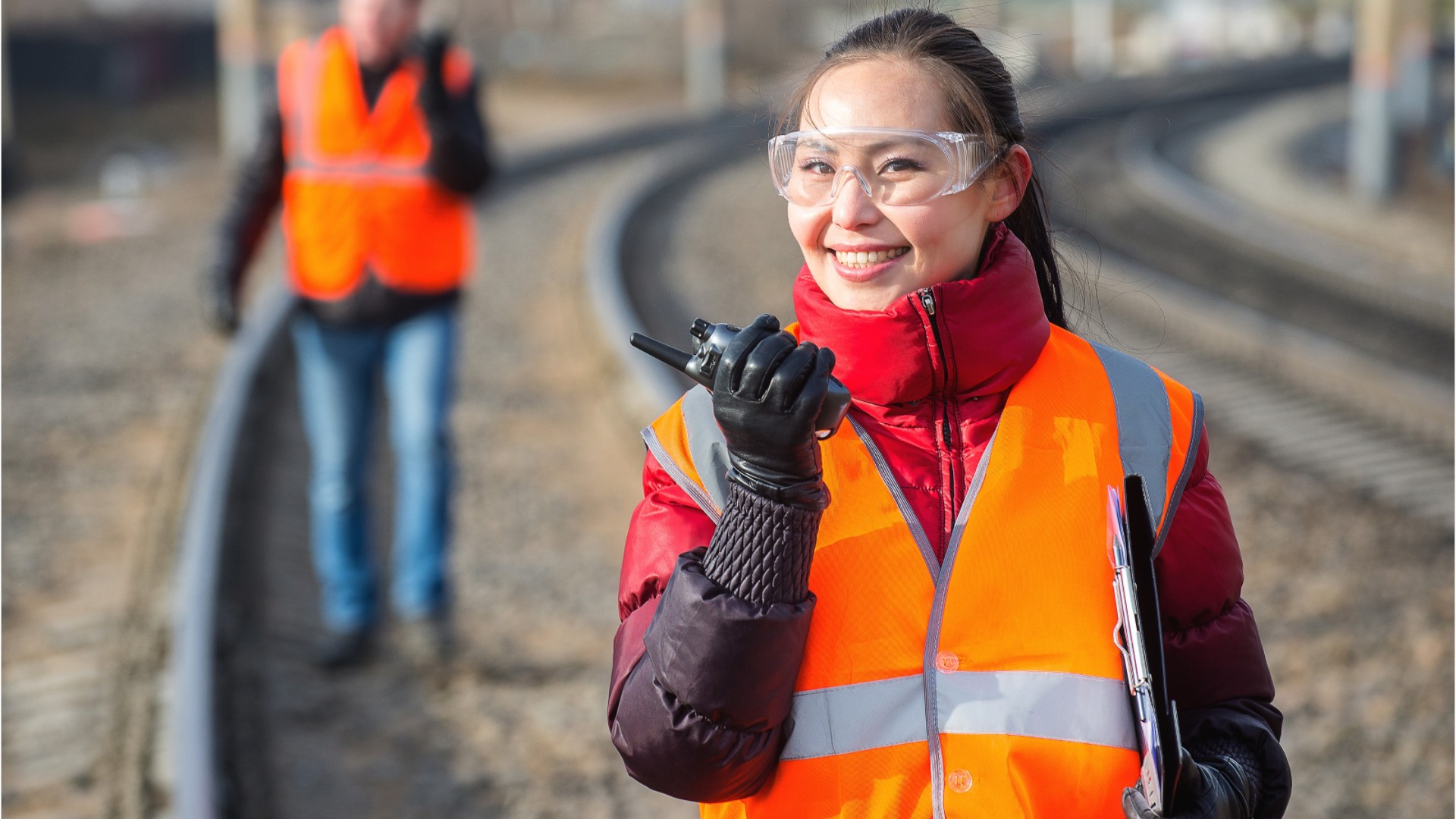Railroad Brake, Signal, & Switch Operators & Locomotive Firers
Brakeman, Locomotive Switch Operator, Railroad Switchman, Trainman
 Select a military branch to see samples.
No similar titles were found.
Select a military branch to see samples.
No similar titles were found.
Cavalry Scout; Railway Specialist (USAR only); Unit Supply Specialist; Wheeled Vehicle Mechanic
No similar titles were found.
No similar titles were found.
No similar titles were found.
No similar titles were found.
What they do:
Operate or monitor railroad track switches or locomotive instruments. May couple or uncouple rolling stock to make up or break up trains. Watch for and relay traffic signals. May inspect couplings, air hoses, journal boxes, and hand brakes. May watch for dragging equipment or obstacles on rights-of-way.
On the job, you would:
- Observe train signals along routes and verify their meanings for engineers.
- Signal locomotive engineers to start or stop trains when coupling or uncoupling cars, using hand signals, lanterns, or radio communication.
- Pull or push track switches to reroute cars.
Knowledge
Transportation
- movement of people or goods by air, rail, sea, or road
Safety and Government
- public safety and security
Engineering and Technology
- mechanical
Arts and Humanities
- English language
Skills
Basic Skills
- keeping track of how well people and/or groups are doing in order to make improvements
- listening to others, not interrupting, and asking good questions
Problem Solving
- noticing a problem and figuring out the best way to solve it
Abilities
Controlled Movement
- quickly change the controls of a machine, car, truck or boat
- use your arms and/or legs together while sitting, standing, or lying down
Attention
- pay attention to something without being distracted
Hand and Finger Use
- keep your arm or hand steady
- hold or move items with your hands
Verbal
- listen and understand what people say
Personality
People interested in this work like activities that include practical, hands-on problems and solutions.
They do well at jobs that need:
- Dependability
- Attention to Detail
- Stress Tolerance
- Self Control
- Adaptability/Flexibility
- Independence
Technology
You might use software like this on the job:
Expert system software
- Electronic train management systems ETMS
Route navigation software
- Route mapping software
Time accounting software
- Time tracking software
Education
Education: (rated 2 of 5)
Get started on your career:
Find Training
Apprenticeship.gov
Job Outlook
Below Average
New job opportunities are less likely in the future.
Explore More
- Bus & Truck Mechanics & Diesel Engine Specialists
- Hoist & Winch Operators
- Locomotive Engineers
- Rail Yard Engineers, Dinkey Operators, & Hostlers
- Railroad Conductors & Yardmasters
You might like a career in one of these industries:
See more details at O*NET OnLine about railroad brake, signal, and switch operators and locomotive firers.




